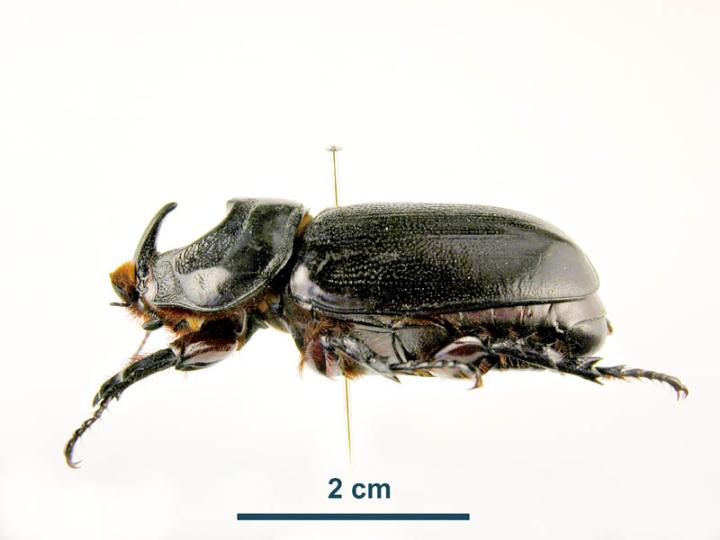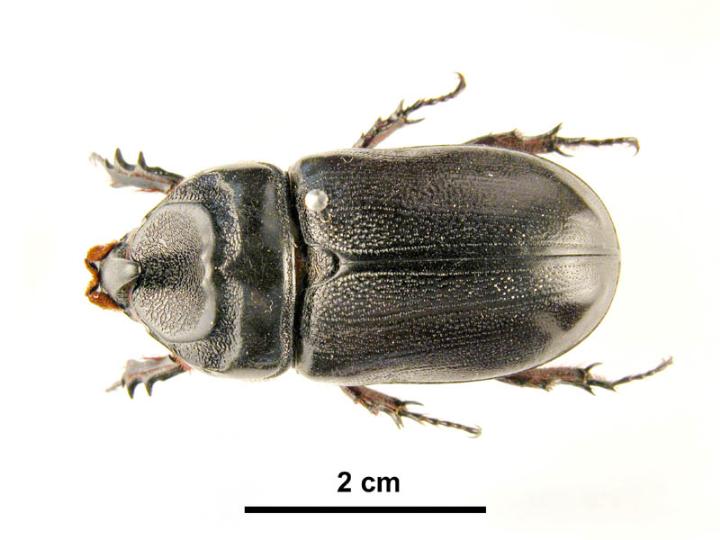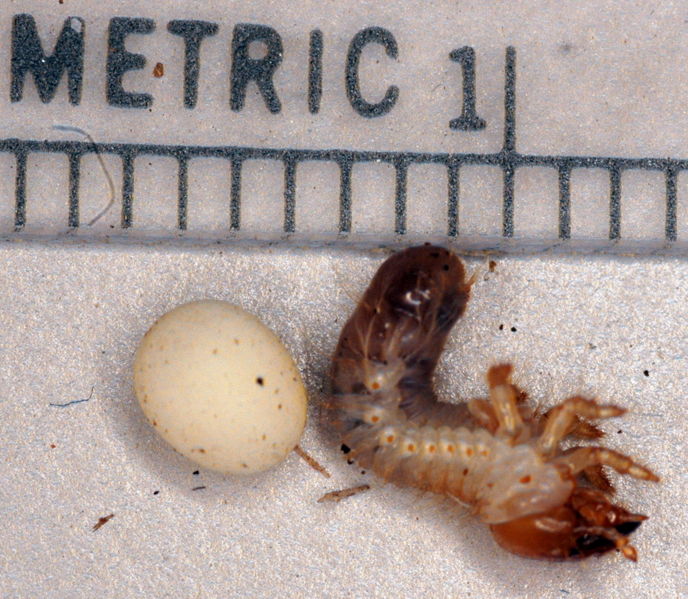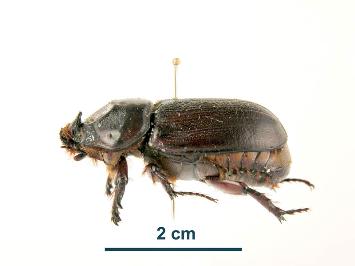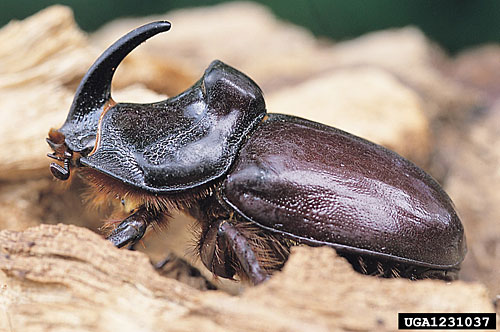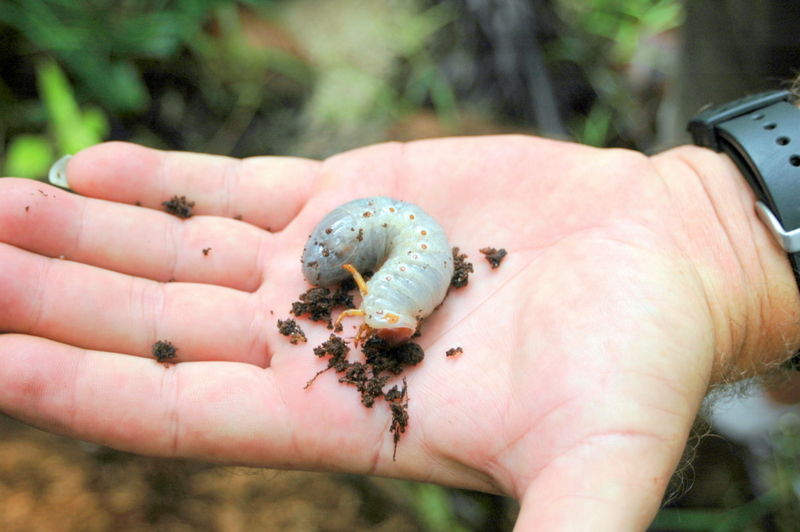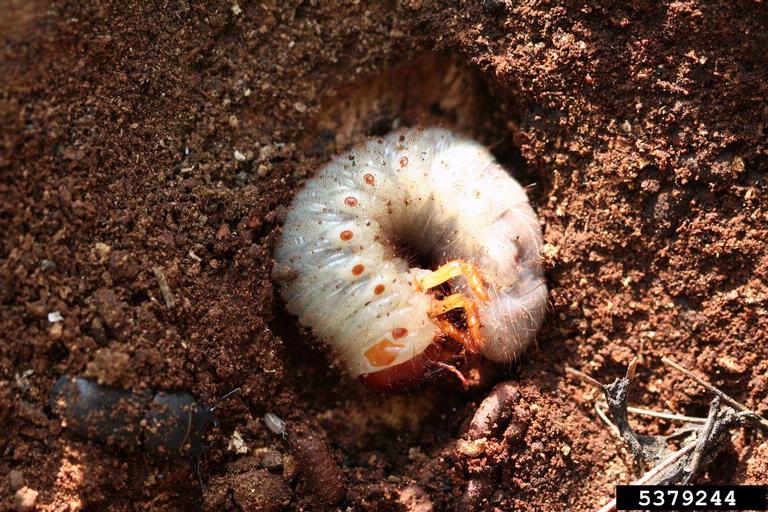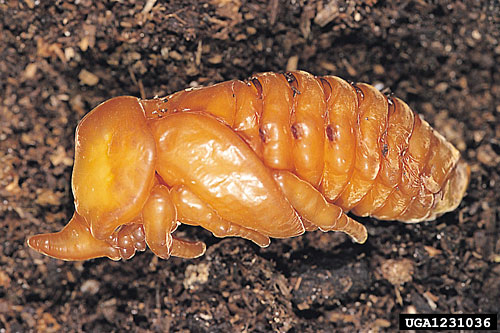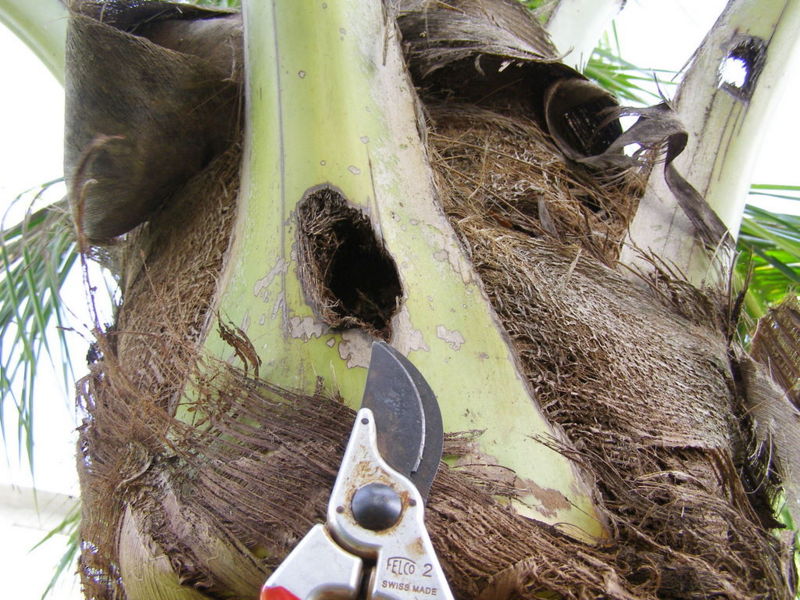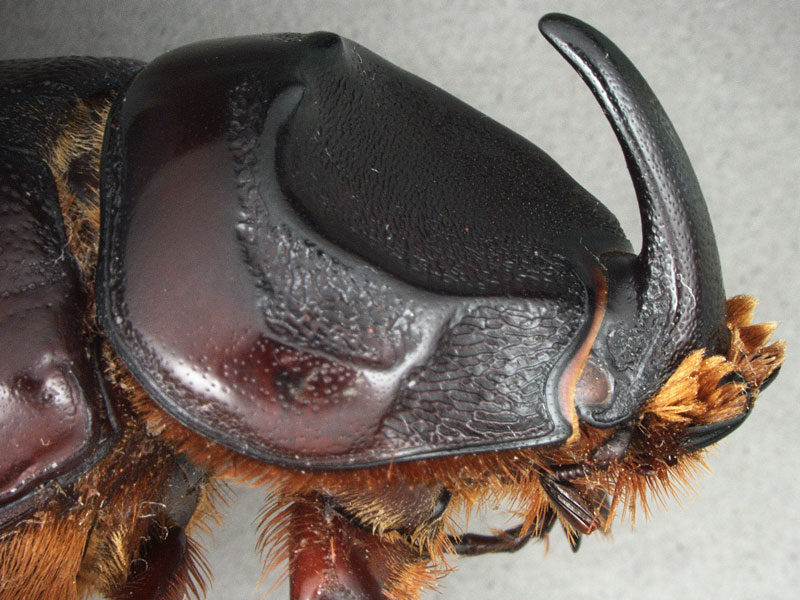Rhinoceros Beetles
|
coconut rhinoceros beetle, Oryctes rhinoceros, male, lateral view; Photo by Peter Lillywhite, Museum Victoria, Pests and Diseases Image Library |
|
coconut rhinoceros beetle, Oryctes rhinoceros, male, dorsal view; Photo by Peter Lillywhite, Museum Victoria, Pests and Diseases Image Library |
|
coconut rhinoceros beetle, Oryctes rhinoceros, egg and neonate larva; Photo by Aubrey Moore, University of Guam |
|
coconut rhinoceros beetle, Oryctes rhinoceros, female, lateral view; Photo by Peter Lillywhite, Museum Victoria, Pests and Diseases Image Library |
|
European rhinoceros beetle, Oryctes nasicornis, male, lateral view; Photo by Gyorgy Csoka, Hungary Forest Research Institute, Bugwood.org |
|
coconut rhinoceros beetle, Oryctes rhinoceros, larva; Photo by Aubrey Moore, University of Guam |
|
European rhinoceros beetle, Oryctes nasicornis, larva; Photo by Milan Zubrik, Forest Research Institute - Slovakia, www.insectimages.org |
|
European rhinoceros beetle, Oryctes nasicornis, larvae and adult; Photo by Milan Zubrik, Forest Research Institute - Slovakia, www.insectimages.org |
|
European rhinoceros beetle, Oryctes nasicornis, pupa; Photo by Gyorgy Csoka, Hungary Forest Research Institute, Bugwood.org |
|
feeding damage from adult coconut rhinoceros beetle, Oryctes rhinoceros; Photo courtesy of Ernie Nelson, Greenscapes Inc. |
|
feeding damage to leaves from adult coconut rhinoceros beetle, Oryctes rhinoceros; Photo by Ben Quicocho |
|
rhinoceros beetle, lateral view of head; Photo by James Korecki, USDA-APHIS-PPQ |
|
rhinoceros beetle, front view of head; Photo by James Korecki, USDA-APHIS-PPQ |
|
rhinoceros beetle, ventral view of head; Photo by James Korecki, USDA-APHIS-PPQ |
Scientific name
Oryctes rhinoceros L. and Oryctes nasicornis L.
Family
Family Scarabaeidae, Subfamily Dynastinae
Description
Rhinoceros beetles are a subfamily of beetles that are among the largest-bodied beetles, ranging from 30-60 mm. Their common name is derived from the characteristic cephalic horn, which is usually considerably larger in males. The adults are black or dark brown, often reddish, with velvety reddish-brown pubescence on the ventral surface. The female O. rhinoceros also has these hairs on the pygidiumpygidium:
the dorsal portion of the last abdominal segment
, which can help distinguish her from the male. Females lay 70-140 small eggs (3-4 mm long) in decaying wood, and the larvae hatch around 12 days later. The larvae are large (60-105 mm), white, and C-shaped, with legs and a brown head capsule. They feed on the rotting wood, and develop for 72-130 days before pupating. The imagoimago:
the adult stage of an insect
, or adult, usually emerges after around 20 days. In Oryctes beetles, it is usually the young imagoimago:
the adult stage of an insect
rather than the larva that causes damage by boring the crowns of healthy palms.
Diagnostic features
Rhinoceros beetles are easily recognizable due to their large size and characteristic rear-facing horn on the top of the head, though the horn is reduced in females.
Distribution
Oryctes rhinoceros is native to south and southeast Asia, but has been introduced throughout Asia and the western Pacific.
Oryctes nasicornis is native to Europe, North Africa, and part of Central Asia.
Hosts
Oryctes rhinoceros
Palms: Cocos nucifera (coconut palm), Elaeis guineensis (African oil palm), Phoenix dactylifera (date palm), and a variety of other ornamental palms, including Wodyetia bifurcata (foxtail palm)
Other: pineapple, sugar cane, Pandanus, and banana
Oryctes nasicornis may occur on a variety of palms and other species.
Additional comments
Oryctes rhinoceros is one of the most damaging pests to coconut and African oil palms wherever it occurs.


